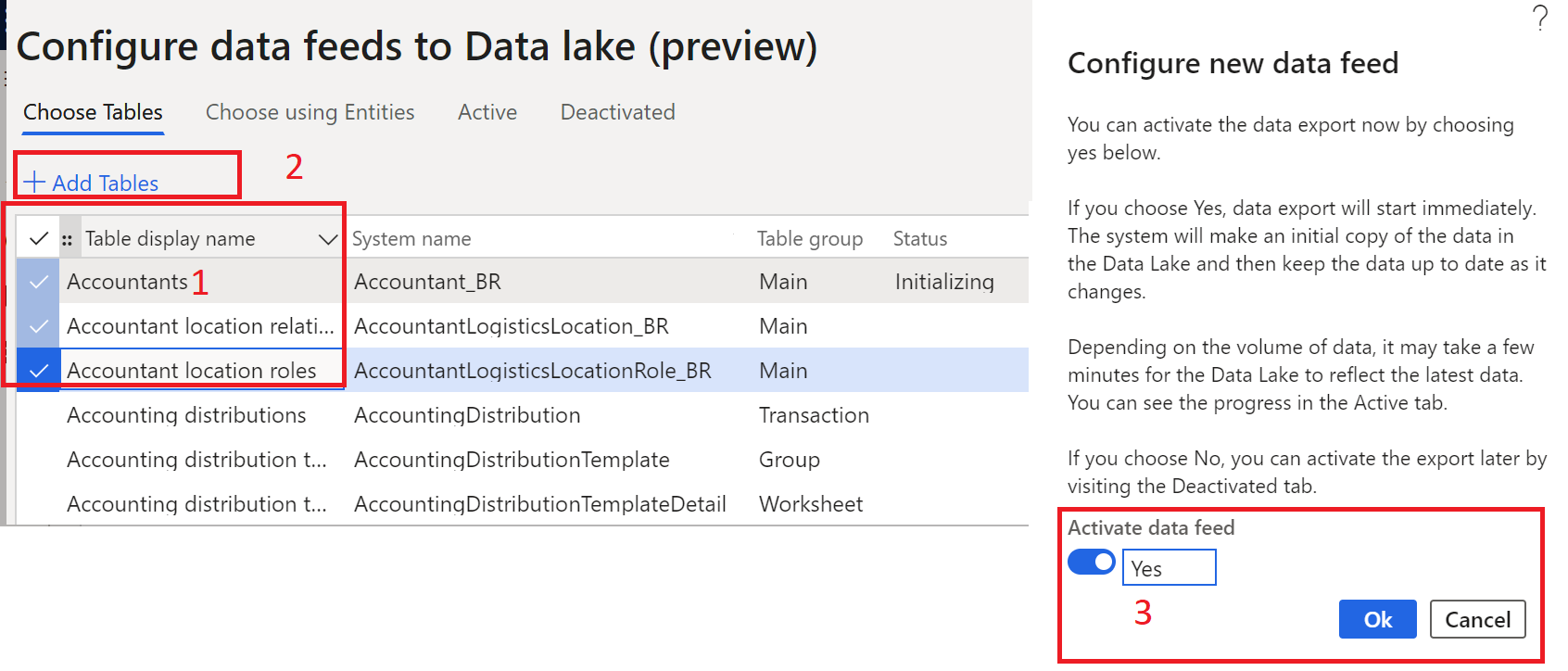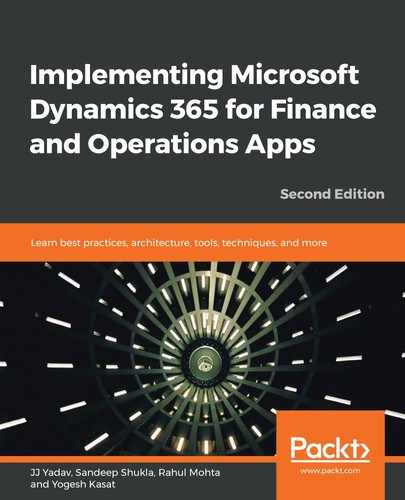Data feeds enable near real-time incremental exports of Dynamics 365 for Finance and Operations data to Azure Data Lake. Data feeds follow a similar architecture model to business events, except here, the data feed is tied to data change create, update, and delete (CUD) events on tables rather than business processes.
The following diagram shows the conceptual architecture model of data feeds:

As shown in the preceding diagram, data feeds track insert, update, and delete events at the table level and send data changes to Azure Data Lake. Finance and Operations data that's ingested in the Azure Data Lake follows Common Data Model (CDM) format, which can be further consumed by Azure data services such as Azure Data Factory, Azure Synapse Analytics, and Power BI for reporting and analytics purposes.
The following screenshot shows the user interface in Finance and Operations to Configure data feeds to Data Lake:

The form lists all the tables in the system that are available for the data feeds. Before you can configure any tables for the data feeds, you have to bring your own Azure Data Lake, store the Azure Data Lake connection string in an Azure Key vault secret, and setup Data connections, on a Data feeds parameters form as shown in the following screenshot:

Once the data connection has been setup, you can configure the tables for the data feeds service. The following mock-up screenshot shows the user interface and the steps you need to follow to configure the data feeds:

As shown in the preceding screenshot, data feeds can be activated in the following steps:
- Select a table or list of tables from the list that you wish to enable the data feeds for.
- Click the Add Tables button.
- Select Activate data feed radio button to Yes and click Ok button.
Similar to the business events feature, data feeds is based on the event-driven architecture pattern and has all the event-driven architecture's benefits, as follows:
- Data feeds are produced in near real-time, which means they enable faster notifications and integration scenarios.
- Incremental data is delivered directly to an Azure Data Lake in CDM format, which enables automatic consumption for reporting and analytics using Power BI, Azure Synapse Analytics, and Azure Data Factory.
- Having Finance and Operations incremental data in an Azure Data Lake in CDM format not only enables powerful out of the box BI and reporting capabilities but also enables a plethora of scenarios for third-party integration.
In summary, data feeds are based on an event-driven architecture that makes incremental data available in the Azure Data Lake in the CDM format for BI and reporting, and for effective integration with third-party systems.
